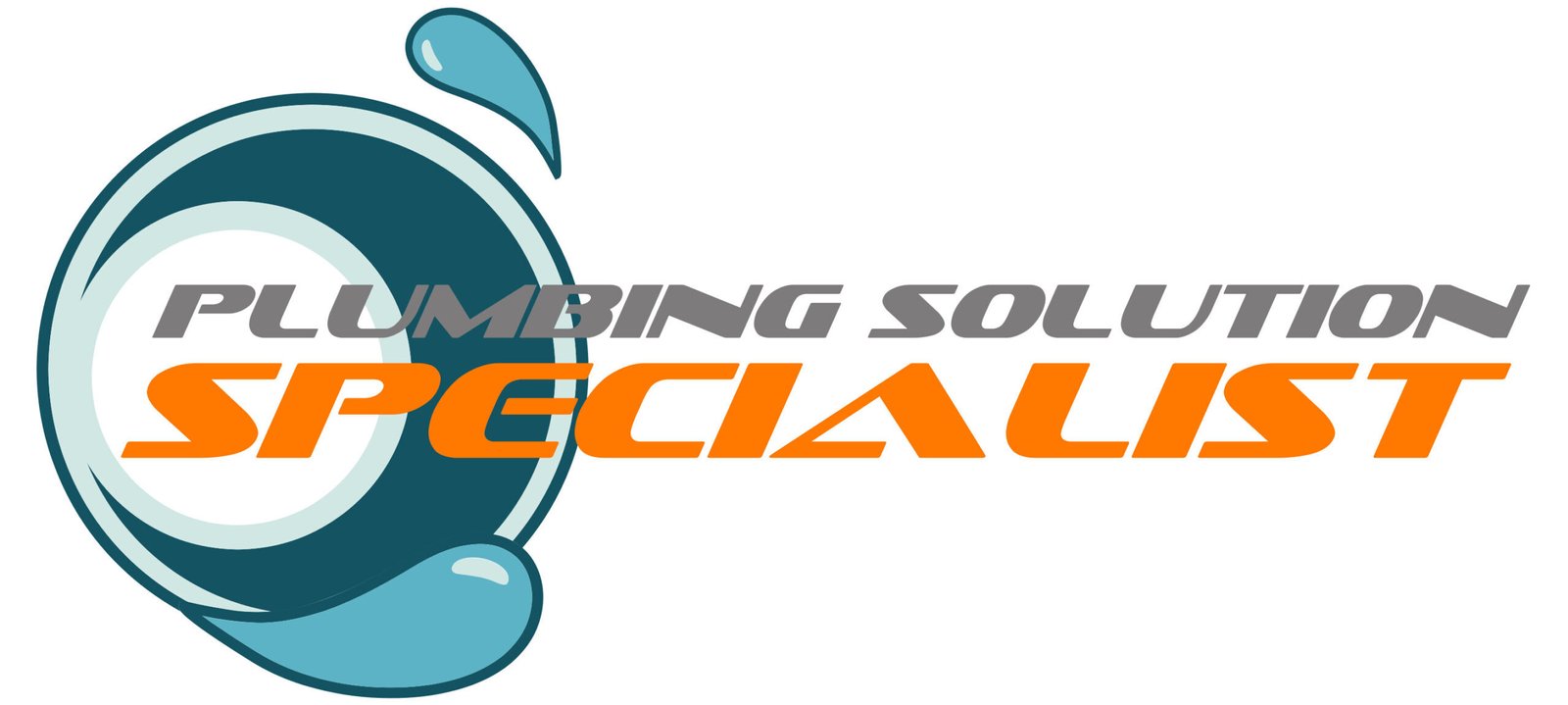The Cost To Repipe Your Home – A Comprehensive Guide
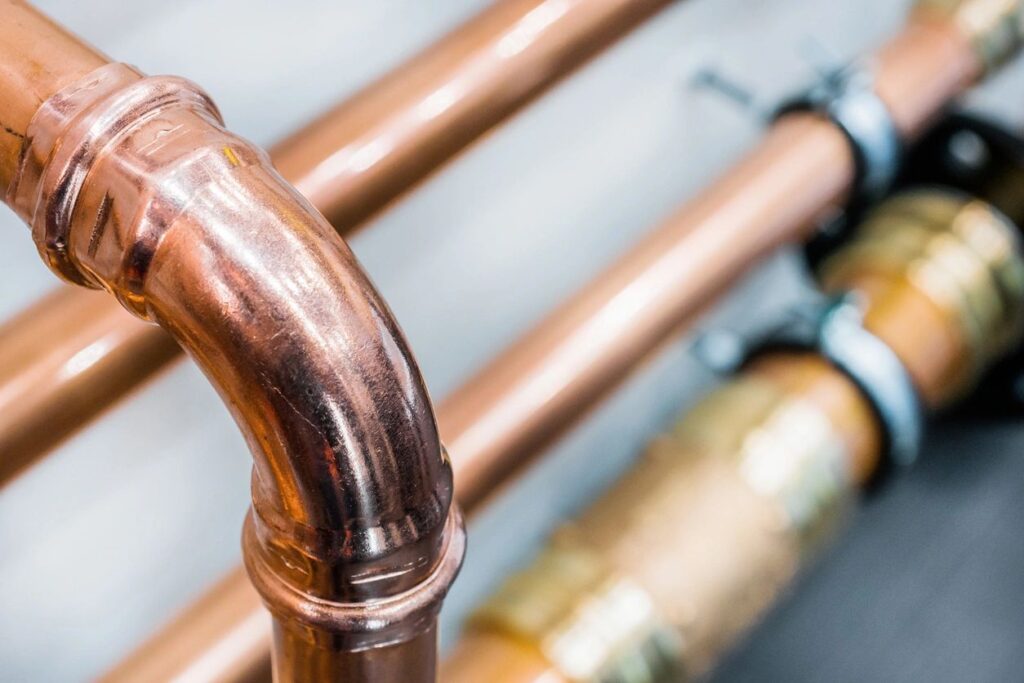
Guide yourself through the important details of repiping your home. Are you worried about the potential dangers of old, corroded pipes? In this comprehensive guide, you’ll learn about the costs involved in repiping your home and why it’s crucial for the health and safety of your family. Let’s examine into the process and factors that determine the overall expenses of this necessary home improvement project. Key Takeaways: Copper vs. PEX: Consider the pros and cons of copper and PEX piping materials before deciding on the best option for your home. Factors Affecting Cost: Understand the factors that can influence the cost of repiping, such as the size of your home, accessibility of pipes, and any additional upgrades needed. Professional Installation: Hiring a licensed and experienced plumber for the repiping project is crucial to ensure the job is done efficiently and correctly. Understanding the Types of Repiping Your repiping project can involve various materials, each with its pros and cons. It’s important to understand the different types of repiping options available so you can make an informed decision based on your specific needs and budget. Copper Repiping: This type of repiping involves replacing old pipes with new copper ones. Copper pipes are durable, resistant to corrosion, and can last up to 50 years with proper maintenance. The initial cost of copper repiping may be higher than other materials, but the long-term benefits make it a popular choice for many homeowners. PEX Repiping: PEX pipes are made from cross-linked polyethylene, a flexible and cost-effective material. PEX repiping is a popular choice for its ease of installation, resistance to scale and chlorine, and lower cost compared to copper. Many homeowners opt for PEX repiping to save on both material and labor costs. Galvanized Repiping PVC Repiping Copper Repiping Any copper repiping project involves replacing old pipes with new copper ones. Copper pipes are known for their longevity and resistance to corrosion, making them a reliable choice for your home’s plumbing system. PEX Repiping If you’re considering PEX repiping, you’ll be opting for a more flexible and cost-effective material. PEX pipes are easier to install, resistant to scale build-up, and offer long-term durability. This makes PEX repiping a popular choice for many homeowners looking to upgrade their plumbing system. This material is a great alternative to traditional copper pipes, providing similar performance at a lower cost. PEX pipes are also less prone to burst in freezing temperatures, making them a practical option for homes in colder climates. Galvanized Repiping On older homes, you may encounter galvanized pipes that need replacement due to corrosion and rust buildup. Galvanized repiping involves removing these outdated pipes and replacing them with more durable and long-lasting materials to ensure the longevity and efficiency of your plumbing system. The use of galvanized pipes has declined over the years due to their susceptibility to corrosion and clogging. Upgrading to modern plumbing materials like copper or PEX can improve water flow and quality in your home. PVC Repiping Repiping with PVC involves replacing old pipes with new PVC ones, which are lightweight, cost-effective, and resistant to corrosion. PVC pipes are commonly used for drain lines and sewer systems due to their durability and ease of installation. Understanding your options for repiping materials can help you make an informed decision based on your home’s specific needs and budget. It’s crucial to consider factors such as longevity, durability, cost, and ease of installation when choosing the right material for your repiping project. Factors Affecting the Cost of Repiping The cost of repiping your home can vary depending on several factors. Understanding these factors can help you estimate the overall expense of the project and plan accordingly. Here are some key factors that can impact the cost of repiping: Material Costs On average, material costs make up a significant portion of the total repiping expense. Copper pipes are generally more expensive than PEX pipes, which can affect the overall cost of the project. Additionally, the size and length of the pipes needed for your home can also influence the material costs. Thou, it’s vital to consider these factors when budgeting for your repiping project. Labor Costs Assuming you hire a professional plumber to repipe your home, labor costs will also contribute to the total expense. For instance, the complexity of the repiping job, the time required to complete the project, and the number of workers needed can all impact the labor costs. It’s important to get quotes from different contractors to compare labor costs and find the most competitive price. Permits and Inspections The cost of permits and inspections is another factor to consider when budgeting for a repiping project. Before starting the repiping work, you may need to obtain permits from your local building department. Additionally, inspections may be required at various stages of the project to ensure the work meets building codes. These permits and inspections can add to the overall cost of the project, so it’s important to factor them into your budget. Location and Accessibility Repiping a home in a location with limited accessibility can affect the overall cost of the project. Factors such as the distance of the pipes from the main water line, the number of floors in your home, and the presence of obstacles can all impact the labor costs and time required to complete the repiping work. Size of the Home Factors such as the size of your home and the number of fixtures can also influence the overall cost of repiping. Another important consideration is whether you have a single-story or a multi-story home, as the complexity of the repiping work can vary based on the layout of your home. Step-by-Step Guide to Repiping Your Home After understanding the cost and necessity of repiping your home, it’s time to explore into the step-by-step process. From shutting off the water supply to reconnecting fixtures and appliances, here is a comprehensive guide to help you through the repiping process. Shutting Off the Water Supply Now, the first
Understanding The Average Cost To Repipe A Home – Factors To Consider Before Starting The Project

You may be considering repiping your home, but before you look into the project, understanding the average cost and factors to consider is crucial. From material choices to labor expenses, this informative guide will break down the key components that contribute to the overall cost of repiping a home. By the end, you will have a better grasp of what to expect financially and how to plan effectively for this significant home improvement project. Key Takeaways: Material Costs: The type of piping material used can significantly impact the overall cost of repiping a home. Size of the Home: The square footage of the home and the number of fixtures being replaced will affect the total project cost. Labor Costs: Labor costs, including the complexity of the installation and the location of the home, should be carefully considered when budgeting for a repiping project. The Average Cost of Repiping a Home National Averages Average cost to repipe a home varies based on several factors, such as the size of the house, the number of bathrooms, and the materials used. The average cost can range from $2,500 to $15,000 or more, depending on these variables. A smaller home with fewer bathrooms will generally cost less to repipe compared to a larger house with multiple bathrooms. Factors Affecting Cost The cost of repiping your home can be influenced by several key factors. One of the primary factors is the size of your home – larger homes will generally cost more to repipe than smaller ones. Additionally, the age of your home and the type of plumbing material used can impact the overall cost of the project. Material: The type of pipes you choose, such as copper or PEX, can affect the cost of the project. Copper pipes are more expensive but have a longer lifespan, while PEX is more affordable but may need to be replaced sooner. Extent of Damage: If there is extensive damage to your current plumbing system, the cost of repiping may increase significantly. Location: The location of your home can also impact the cost, as labor rates and material costs vary by region. Any unexpected issues that arise during the repiping process can also add to the final cost. Material Choices and Their Impact on Cost Even before you start the repiping process, it’s crucial to consider the materials that will be used. Different pipe materials have varying costs and can significantly impact the overall cost of the repiping project. To learn more about the different types of materials and their impact on costs, check out Everything You Need To Know About Repiping A House. Copper Piping Piping made of copper is a popular choice due to its durability and longevity. While copper piping is more expensive upfront, it has a proven track record of performance and can last for decades without needing replacement. The initial investment in copper piping may be higher, but the long-term savings from not having to replace pipes frequently can make it a cost-effective option. PEX Piping Material choice plays a significant role in determining the overall cost of repiping your home. PEX piping is a more budget-friendly alternative to copper. It is a flexible plastic material that is easier and quicker to install, reducing labor costs. PEX piping is also resistant to corrosion and can expand without bursting, making it a durable and cost-effective option for repiping projects. Understanding the pros and cons of each material can help you make an informed decision based on your budget and long-term goals for your home’s plumbing system. Galvanized Piping The use of galvanized pipes was common in older homes, but they pose several issues that may increase the overall cost of repiping. The appeal of galvanized piping lies mainly in its low upfront cost; however, over time, these pipes are prone to corrosion and rust, leading to reduced water pressure and potential leaks. It is important to consider the long-term maintenance and replacement costs associated with galvanized piping when deciding on the best material for your repiping project. Size and Complexity of the Home Your home’s size and complexity are crucial factors that can significantly impact the cost of repiping. Various aspects such as the number of bathrooms and fixtures, square footage, layout, and whether your home is multi-story or single-story all play a role in determining the average cost to repipe a home. Number of Bathrooms and Fixtures An important factor to consider when determining the cost to repipe your home is the number of bathrooms and fixtures you have. More bathrooms and fixtures mean more pipes that will need to be replaced, which can increase the overall cost of the repiping project. Additionally, the complexity of the plumbing system in each bathroom, such as whether you have a shower, bathtub, or multiple sinks, can impact the cost as well. Square Footage and Layout Number of bathrooms and fixtures is one consideration, but the square footage and layout of your home also play a crucial role in the cost of repiping. Larger homes will require more piping, increasing the overall cost of materials and labor. The layout of your home, including the distance between plumbing fixtures and the main water line, can also impact the complexity of the project. It’s crucial to consider these factors when estimating the average cost to repipe your home. A larger home with a complex layout and multiple bathrooms will likely require more materials and labor, resulting in a higher overall cost for the repiping project. Multi-Story vs. Single-Story Homes With respect to the layout of your home, whether it is multi-story or single-story can have a significant impact on the cost to repipe. Multi-story homes require additional considerations such as running pipes through multiple levels, which can increase the complexity of the project. This added complexity may lead to higher costs due to the additional labor and materials required for a multi-story repiping project. Understanding the implications of the layout of your home is crucial when
Are Corroded Pipes Draining Your Wallet? Repiping Costs Explained.
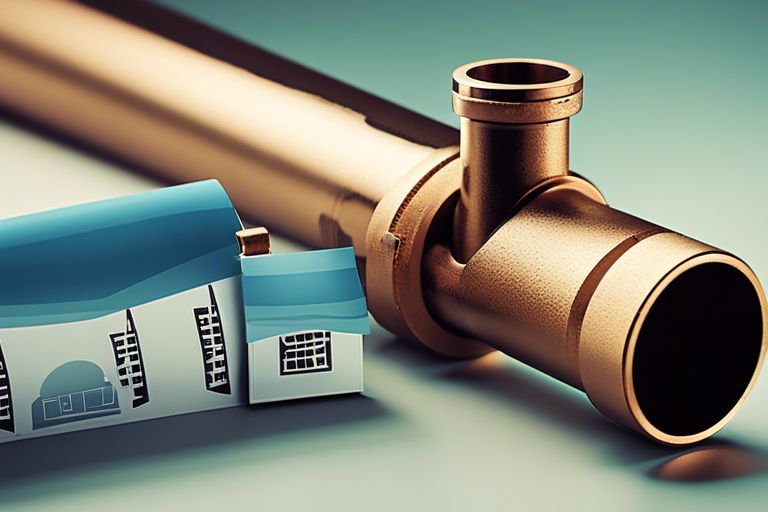
Many homeowners overlook the danger of corroded pipes, which can lead to costly leaks, water damage, and even health hazards. In this informative post, you will discover the importance of assessing your plumbing system for signs of corrosion, and we will explain the costs involved in repiping your home. By the end of this article, you will have a clear understanding of how corroded pipes could be draining not only your wallet but also your peace of mind. Key Takeaways: Corrosion in pipes can lead to a variety of issues, including leaks, low water pressure, and water discoloration. Repiping may be necessary to address these problems, involving the replacement of old, corroded pipes with new ones. Repiping costs can vary depending on factors such as the size of the home, the materials used, and the extent of the repiping job. The Hidden Dangers of Corroded Pipes Aging pipes in your home can pose significant risks that may not be immediately visible. Corroded pipes can lead to a host of problems, including health hazards and property damage. It’s crucial to understand the potential dangers associated with corroded pipes so that you can take the necessary steps to address them before they escalate. Health Risks Associated with Corroded Pipes Hidden within your walls, corroded pipes can contaminate your water supply with harmful substances like lead and copper. Exposure to these contaminants can result in serious health issues, including gastrointestinal problems, neurological disorders, and developmental delays, especially in young children. Regularly inspecting and replacing corroded pipes is vital to safeguarding your family’s health and well-being. Property Damage Caused by Leaks and Water Damage Leaks from corroded pipes can go unnoticed for extended periods, causing water damage to your home’s structure, walls, and foundations. This can lead to mold growth, compromised structural integrity, and costly repairs. If left untreated, the continuous leaking can result in flooding, ruining your belongings and posing a safety hazard. It’s crucial to address corroded pipes promptly to prevent extensive property damage and the associated financial burden. Identifying Corroded Pipes It’s crucial to be able to identify corroded pipes in your home to avoid potential costly damages. Corrosion can weaken pipes, leading to leaks, low water pressure, and even health hazards. Knowing the signs of corroded pipes can help you take proactive measures to prevent further damage. Visible Signs of Corrosion For visible signs of corrosion on your pipes, you should look for discoloration, stains, and flaking on the pipes’ surface. Rust or greenish patches are also indicators of corrosion. Additionally, bumps or scaling on the pipes can signal a corrosion issue. Hidden Signs of Corrosion Corroded pipes may also exhibit hidden signs that can be more challenging to detect. Low water pressure, foul odors, discolored water, and water spots on walls or ceilings can be indications of hidden pipe corrosion. Sudden spikes in your water bill without a clear explanation can also be a sign of hidden pipe corrosion. Corrosion can occur inside pipes without any visible external signs. Regular inspection by a professional plumber, especially in older homes or buildings, can help identify hidden corrosion before it leads to more extensive damage. Repiping Options Traditional Repiping Methods On your journey to address your corroded pipes and potentially costly leaks, you have several repiping options to consider. Traditional repiping methods such as copper and galvanized steel pipes have been the norm for decades. These materials are durable and can last for many years, providing reliable water flow throughout your home. Modern Repiping Solutions (e.g., PEX, Copper) Solutions such as PEX (cross-linked polyethylene) and copper are gaining popularity due to their durability, flexibility, and cost-effectiveness. PEX piping is known for its resistance to corrosion and freezing, making it a reliable choice for repiping your home. Alternatively, copper piping has a long history of use in plumbing due to its resilience and longevity. Modern repiping options like PEX and copper offer you a chance to upgrade your plumbing system with materials that are not only reliable but also more cost-effective and efficient in the long run. These solutions can help you avoid future plumbing issues and save you money on repairs and maintenance. Factors Affecting Repiping Costs Now, let’s explore into the various factors that can affect the costs involved in repiping your property. Understanding these factors will help you make informed decisions and budget effectively for this necessary investment. Pipe Material and Quality The type of pipe material used in your plumbing system plays a significant role in determining repiping costs. Older homes may have outdated galvanized steel pipes that are prone to corrosion and leaks. Upgrading to modern materials such as copper or PEX can improve the longevity and efficiency of your plumbing system. Furthermore, the quality of the pipes, whether they are standard or high-grade, will also impact the overall cost of repiping. Pipe Size and Complexity For optimal functionality and water flow, the pipe size must match the needs of your property. Larger homes with multiple bathrooms and complex layouts will require more intricate piping systems, leading to higher costs. Moreover, factors like the number of bends, angles, and connections can increase the complexity of the repiping project, affecting the overall expenses. Keep in mind that a thorough assessment of your property’s plumbing needs is crucial to determine the appropriate pipe size and complexity required for the repiping process. Accessibility plays a vital role in determining repiping costs. If the pipes in your home are located in hard-to-reach areas such as behind walls, under flooring, or in the ceiling, the accessibility factor can significantly impact the total cost of repiping. Accessibility issues may require additional labor and resources to access and replace the pipes effectively. Ensure that the location of the pipes in your property is easily accessible to minimize repiping costs. It is important to consider these factors when estimating the costs of repiping your property. By understanding the pipe material, size, complexity, and location factors, you can make informed decisions and prepare financially for
Is Regular Maintenance The Key To Avoiding High Repiping Costs In The Future?
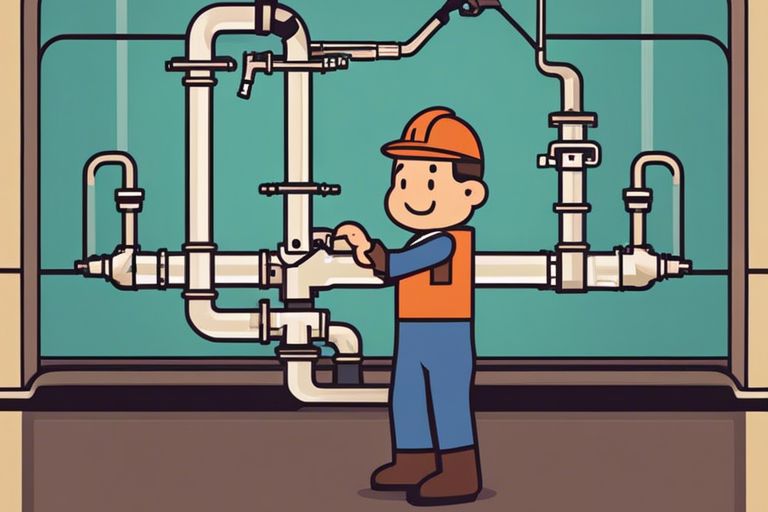
There’s no escaping the fact that regular maintenance is crucial when it comes to avoiding high repiping costs in the future. By taking care of your plumbing system and addressing any issues promptly, you can prevent small leaks and corrosion from turning into major problems that require costly repiping. Stay on top of your home’s plumbing health, and you’ll save yourself from the headache and expense of unexpected repairs down the line. Key Takeaways: Regular maintenance is crucial: Consistent upkeep of your plumbing system can prevent major issues that may lead to high repiping costs in the future. Early detection of problems: Routine checks can help identify potential issues early on, allowing for timely repairs and avoidance of extensive damage. Prolonging the lifespan of your pipes: By taking care of your plumbing system through regular maintenance, you can extend the lifespan of your pipes and delay the need for costly repiping. The Consequences of Neglecting Regular Maintenance Increased Risk of Pipe Failure Pipe neglect can lead to a higher risk of pipe failure in your home. When pipes are not properly maintained, they can develop issues such as corrosion, leaks, and clogs. Over time, these problems can escalate into major pipe failures, causing extensive damage to your property and requiring costly repiping. Water Damage and Mold Growth Damage from neglected pipes can result in water leaks that go unnoticed for a long time. This prolonged exposure to moisture can lead to water damage within your walls, floors, and ceilings. Additionally, stagnant water provides the perfect breeding ground for mold growth, which not only damages your property but also poses serious health risks to you and your family. Neglecting regular maintenance of your pipes can result in significant water damage and mold growth in your home, leading to expensive repairs and potential health hazards. Higher Energy Bills and Water Waste Regular maintenance of your pipes ensures that they are functioning efficiently. Neglected pipes are more likely to develop leaks or blockages, causing your water system to work harder to function properly. This increased strain on your system can result in higher energy bills and water waste. This means that by neglecting the regular maintenance of your pipes, you could be unknowingly increasing your energy bills and wasting valuable resources. Identifying Early Warning Signs of Repiping Needs There’s a saying that prevention is better than cure, and when it comes to your home’s plumbing, that couldn’t be more true. By identifying early warning signs of repiping needs, you can avoid costly repairs and inconvenience down the road. Here are some key indicators that it may be time to consider repiping your home: Low Water Pressure Repiping may be necessary if you’ve noticed a significant decrease in water pressure throughout your home. This could indicate a buildup of sediment or mineral deposits in your pipes, restricting the flow of water. Addressing this issue early on can help prevent further damage and the need for extensive repiping in the future. Discolored or Corroded Water Corroded or discolored water coming out of your faucets is a clear sign that your pipes are deteriorating. This could be due to rust or other contaminants leaching into your water supply. Signs of corrosion or discoloration should not be ignored, as they can lead to leaks and potentially harmful water quality issues. It’s important to address any discoloration or corrosion in your water as soon as possible. Not only is it unappealing to have rust-colored water coming out of your faucets, but it could also indicate serious damage to your pipes that may require immediate attention. Frequent Leaks and Water Spots For a persistent problem with leaks and water spots in your home, it’s crucial to investigate the source. These issues could be indicative of deteriorating pipes that are prone to bursting or leaking. By addressing the root cause of these leaks early on, you can prevent more extensive damage and costly repairs in the future. Discolored or warped areas on your walls or ceilings could be a sign of hidden water leaks within your pipes. These leaks not only indicate pipe degradation but can also lead to mold growth and structural damage if left untreated. Taking action at the first sign of leaks can save you from more significant problems down the line. The Benefits of Regular Maintenance Once again, investing in regular maintenance for your home’s plumbing can provide several key benefits that can help you avoid high repiping costs in the future. Extended Pipe Lifespan Benefits: One of the primary advantages of regular maintenance is the extended lifespan it can offer to your pipes. By scheduling routine inspections and upkeep, you can catch potential issues early before they develop into major problems that require extensive repairs or even complete repiping. Reduced Risk of Emergency Repairs One: Regular maintenance can also significantly reduce the risk of unexpected and costly emergency repairs. When your plumbing system is properly maintained, the chances of sudden pipe bursts or leaks are minimized, saving you from the stress and expense of dealing with urgent issues. Extended: Furthermore, by addressing minor concerns during regular maintenance visits, you can prevent them from escalating into larger, more complicated problems that may necessitate emergency repairs. This proactive approach not only safeguards your home against plumbing disasters but also helps you maintain peace of mind knowing that your system is in good working condition. Cost Savings and Energy Efficiency On: In addition to avoiding high repiping costs, regular maintenance can also lead to significant cost savings and improved energy efficiency in your home. By ensuring that your plumbing system is functioning optimally, you can prevent water wastage due to leaks or inefficient fixtures, ultimately lowering your utility bills. Understanding the importance of regular maintenance for your home’s plumbing can not only help you steer clear of high repiping costs but also contribute to a more efficient, sustainable, and hassle-free living environment. By staying proactive and attentive to the needs of your plumbing system, you can enjoy
Are Leaks And Low Water Pressure Signaling A Need For Repiping?
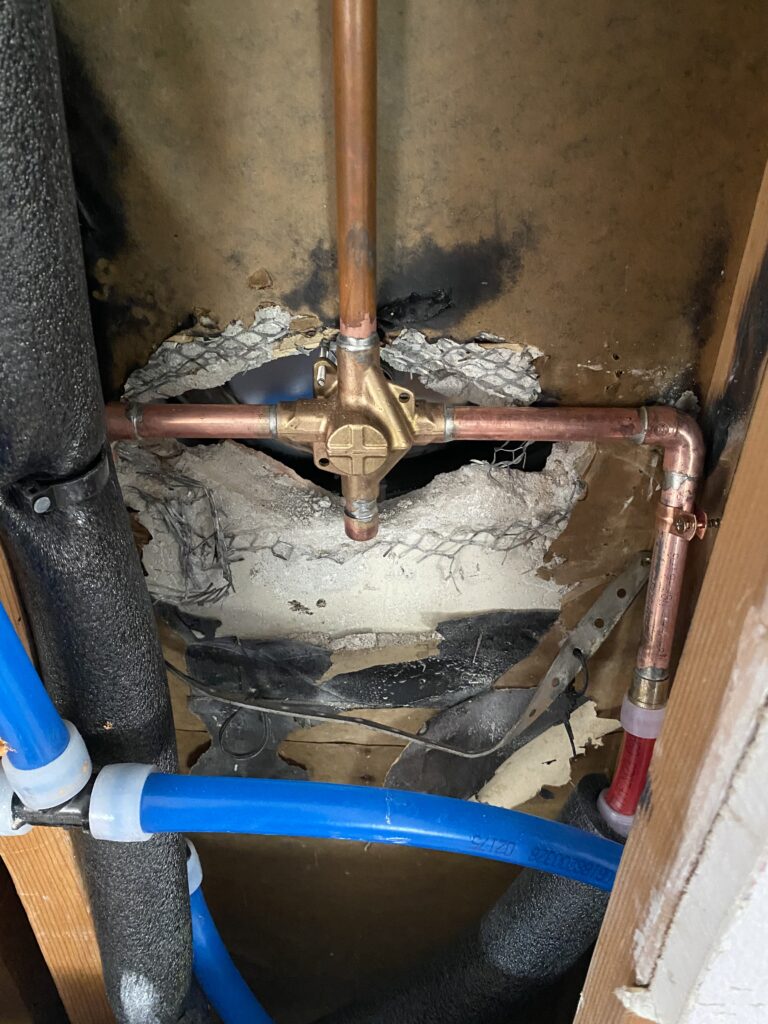
Most homeowners experience frustration when dealing with leaks and low water pressure. These issues may be warning signs that your plumbing system needs attention. In this post, you will learn how to identify these indicators and determine if repiping is necessary for your home. By recognizing the symptoms early, you can prevent potential damage and ensure efficient water flow throughout your house. Key Takeaways: Leaks and Low Water Pressure: Leaks and low water pressure are common signs that indicate potential issues with your pipes. Maintenance Check: If you notice these signs, it is crucial to conduct a thorough maintenance check of your plumbing system. Repiping: Leaks and low water pressure can be indicators that repiping may be necessary to ensure the long-term health of your plumbing system. Identifying the Signs Are you noticing some issues with your plumbing system but unsure if it’s time to consider repiping? Leaks and low water pressure can be indicators that your pipes are in need of attention. Let’s investigate into these signs and help you determine if repiping is necessary. Leaks: More Than Just a Nuisance An unexpected puddle on your floor or a water stain on your ceiling may seem like minor inconveniences, but they can actually be early warnings of a more significant problem. Leaking pipes can lead to water damage, mold growth, and even structural issues in your home. If you notice recurring leaks in multiple areas of your house, it may be time to consider repiping to prevent further damage. Low Water Pressure: A Frustrating Reality More frustrating than standing under a weak stream of water in the shower is trying to wash dishes with low water pressure in the kitchen. This common issue can be caused by various factors, including mineral buildup, pipe corrosion, or even hidden leaks. If you’ve ruled out simple solutions like a clogged faucet aerator, it’s crucial to address the root cause of the problem to restore proper water flow in your home. Low water pressure not only affects your daily tasks but can also indicate a more significant issue within your plumbing system. Ignoring this symptom could lead to more severe problems down the line, making it crucial to address the issue promptly. The Consequences of Inaction Water Damage and Mold Growth To ignore leaks and low water pressure in your home can lead to severe consequences. Water damage is a common issue that can result from untreated leaks, causing structural damage to your property. When water seeps into walls, floors, and ceilings, it can weaken the foundation of your home and create an ideal environment for mold growth. Mold not only damages your property but also poses serious health risks to you and your family. Increased Water Bills and Wasted Resources The consequences of ignoring leaks and low water pressure extend beyond property damage. Increased water bills are a direct result of untreated leaks, as your plumbing system has to work harder to maintain water pressure. This not only wastes resources but also leads to higher utility costs for you. The longer you delay addressing these issues, the more money you are literally flushing down the drain. The longer you delay addressing these issues, the more money you are literally flushing down the drain. Decreased Property Value and Potential Health Risks Value of your property is also at stake when you neglect leaking pipes and low water pressure. Persistent issues can lead to a decrease in your home’s overall value, making it harder to sell in the future. Furthermore, mold growth resulting from untreated leaks can pose potential health risks to anyone living in the property. For instance, breathing in mold spores can trigger allergies, asthma, and other respiratory issues, putting you and your family’s well-being at risk. Causes of Leaks and Low Water Pressure Corroded or Damaged Pipes The most common cause of leaks and low water pressure in your home could be corroded or damaged pipes. Over time, pipes can deteriorate due to various reasons such as age, harsh chemicals in the water, or external factors like soil corrosion. This deterioration can lead to leaks and reduced water pressure throughout your plumbing system. Mineral Buildup and Scale Any mineral buildup and scale within your pipes can also contribute to leaks and low water pressure. Over time, minerals like calcium and magnesium can accumulate inside your pipes, causing blockages and restricting the flow of water. This buildup can lead to increased water pressure and potential leaks in your plumbing system. To prevent mineral buildup and scale in your pipes, consider installing a water softener system. This can help reduce the concentration of minerals in your water supply, ultimately reducing the chances of blockages and leaks in your plumbing system. Incorrect Pipe Installation or Sizing For incorrect pipe installation or sizing, leaks and low water pressure can also result. If pipes are not installed properly or if they are not the correct size for your home’s water demand, it can lead to issues over time. Improper installation can cause leaks at joints, while incorrect sizing can result in inadequate water flow to meet your needs. Mineral buildup and scale can also exacerbate problems with incorrectly installed or sized pipes. The accumulation of minerals can further restrict water flow in pipes that are already struggling to meet your home’s demand, leading to leaks and low water pressure. The Repiping Solution Unlike temporary fixes like patching leaks or installing water pressure boosters, repiping your home offers a long-term solution to your plumbing problems. By replacing old, damaged pipes with new ones, you can enjoy a reliable and efficient water supply system that enhances your daily living experience. Benefits of Repiping: Improved Water Pressure and Quality Repiping your home can lead to a significant improvement in water pressure, ensuring a steady flow from faucets and showerheads. Additionally, new pipes eliminate the risk of contaminants from old, corroded pipes, enhancing the quality of the water you use for drinking, cooking, and bathing. Types of Pipes: Copper,
Step-by-Step Guide To Whole House Repiping – What To Expect
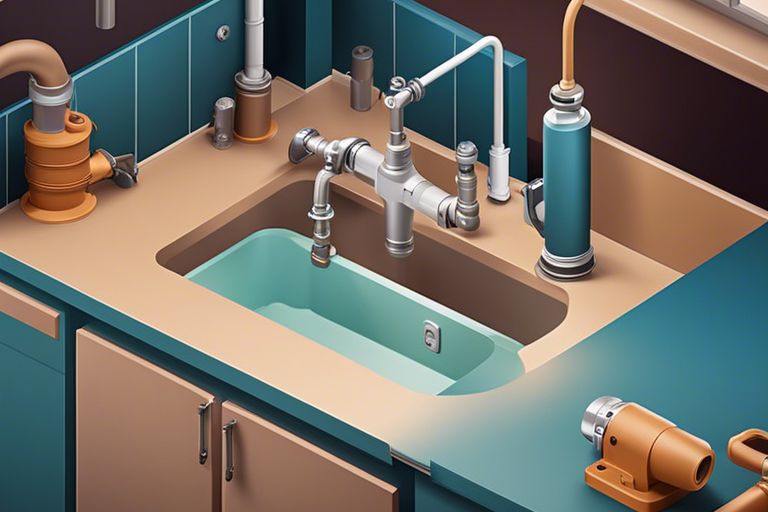
Most importantly, understanding the whole house repiping process can save you time and money. Repiping your entire home can seem like a daunting task, but with this step-by-step guide, you will know exactly what to expect. From the initial assessment to the final inspection, replacing all the pipes in your home is a significant project that requires careful planning and execution. Here’s what you can anticipate throughout the repiping process. Key Takeaways: Assessment: A professional plumber will assess the existing plumbing system to determine the extent of the damage and the best course of action for repiping. Material Options: You’ll have different material options for repiping your house, such as copper, PEX, or CPVC, each with its own pros and cons. Process: The repiping process involves shutting off water, removing old pipes, installing new pipes, and restoring water flow, which can take a few days to complete. Understanding Whole House Repiping What is Whole House Repiping? One of the biggest plumbing projects you may face as a homeowner is whole house repiping. This process involves replacing all the pipes in your home with new ones. Over time, your pipes can deteriorate due to age, corrosion, or mineral buildup, leading to leaks, low water pressure, and other issues. Whole house repiping is a comprehensive solution to upgrade your plumbing system and ensure the efficient flow of water throughout your home. Why is Whole House Repiping Necessary? For many homeowners, the idea of whole house repiping can seem daunting. However, it is necessary when your current pipes are old, damaged, or causing recurring problems. Old pipes are more prone to leaks, burst pipes, and water damage, which can result in costly repairs and potential health hazards. Repiping your home can improve your water quality, increase water pressure, and prevent future plumbing emergencies, giving you peace of mind and a more functional plumbing system. Types of Piping Materials Now, when it comes to whole house repiping, there are several piping materials that you can choose from. Each material has its own unique properties, pros, and cons, so it’s important to understand the differences between them before making a decision. Here are some of the most common piping materials used in whole house repiping: Copper Piping Piping made of copper is a popular choice for repiping projects due to its durability and resistance to corrosion. Copper piping is known for its long lifespan, typically lasting up to 50 years or more with proper maintenance. It is also a safe option for carrying drinking water, as copper does not leach harmful chemicals into your water supply. If you choose copper piping for your whole house repiping project, you can expect a reliable and long-lasting solution for your plumbing system. The initial cost of copper piping may be higher compared to other materials, but the investment is worth it in the long run due to its durability and low maintenance requirements. Any repairs or replacements needed for copper piping are typically straightforward and less frequent compared to other materials. PEX Piping If you are looking for a more cost-effective and flexible piping material for your whole house repiping project, PEX piping is a popular choice. PEX piping is made of cross-linked polyethylene, making it resistant to chemicals and extreme temperatures. The flexibility of PEX piping allows for easy installation around corners and obstacles, reducing the need for additional fittings and connections. Materials: | Pros: | — | — Copper | – Durable and corrosion-resistant | PEX | – Cost-effective and flexible | Galvanized | – Strong and reliable | PVC | – Lightweight and easy to install | Steel | – Resistant to extreme temperatures | Galvanized Piping To ensure a strong and reliable plumbing system, you may consider using galvanized piping for your whole house repiping project. Galvanized piping is made of steel pipes coated with a layer of zinc, making it resistant to corrosion and rust. This type of piping is commonly used in older homes and can last up to 50 years with proper maintenance. Copper piping is a great option for whole house repiping due to its durability and resistance to corrosion. It is a safe choice for carrying drinking water, as copper does not leach harmful chemicals into your water supply. If you opt for copper piping, you can expect a reliable and long-lasting plumbing system that requires minimal maintenance. PVC Piping Little maintenance and a lightweight option for whole house repiping project, PVC piping is a popular choice for its affordability and ease of installation. PVC piping is resistant to corrosion and chemicals, making it a durable option for your plumbing system. It is also lightweight and easy to work with, reducing labor costs and installation time. Understanding the differences between various piping materials will help you make an informed decision for your whole house repiping project. Each material has its own set of benefits and drawbacks, so consider your budget, needs, and preferences before selecting the right piping material for your home. Do not forget, investing in high-quality piping materials will ensure a reliable and efficient plumbing system for years to come. Factors to Consider Before Repiping Unlike minor plumbing repairs, whole house repiping is a major undertaking that requires careful consideration. Before deciding to repipe your home, there are several factors you should take into account to ensure the process goes smoothly and meets your needs. Age and Condition of Existing Pipes For whole house repiping, the age and condition of your existing pipes play a crucial role in determining whether you need to replace them. If your home has old galvanized pipes that are showing signs of corrosion, leaks, or frequent clogs, it may be time to consider repiping. Knowing the materials used in your current piping system and their condition will help you make an informed decision about whether repiping is necessary. Water Quality and Pressure There’s more to repiping than just replacing old pipes. Water quality and pressure are also important factors to consider
